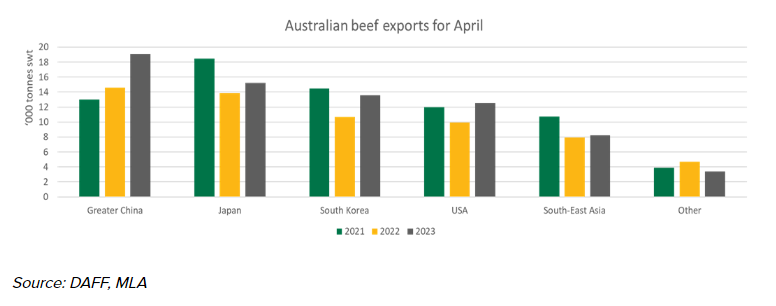Australia’s cattle herd is expected to grow this year to its biggest size since 2014, highlighting current confidence levels in the industry, according to Meat and Livestock Australia (ALM).
Despite a series of natural disasters which have affected many parts of the country, the ALM believes Australia’s cattle herd will grow to 28.8 million head in 2023.
It has also forecast that the strong supply of cattle is expected to continue for a further two years despite seasonal conditions.
ALM has indicated that the cattle herd will continue to increase into 2024 with the national herd expected to hit 29.6 million by 2025 – making it the highest level since the 1970s.
Exports
Latest figures from ALM suggest that Australia’s red meat exports totaled 126,445t in April 2023, which is 17% above levels one year ago, and beef exports were 17% higher than April last year at 72,064t.

The chair of Joint Oireachtas Committee on Agriculture, Food and the Marine, Fianna Fáil TD, Jackie Cahill told Agriland that he does not believe that the growth in Australian exports will have an impact on Irish producers.
“Products coming into the European Union (EU) have to be structured to the same standard as the produce made by EU farmers,” he said.
“Standard EU production cannot be undermined by products coming in from other countries that may not have the same level of controls over animal welfare and climate control.”
Deputy Cahill also does not believe that strong exports from Australia will affect the price “the world beef market is very strong due to production of beef dropping worldwide”.
Lamb
In 2022, 284,257t of lamb was exported from Australia which made it a record-breaking year according to ALM. Latest figures suggest that:
- Lamb exports are outperforming 2022 volumes, with exports growing 6% in 2023;
- China, South Korea and the Middle East and North Africa (MENA) are recording substantial export growth;
- Exports to the US have softened against domestic economic pressures.
Deputy Cahill added: “It all comes down to standards and whether they can meet them.”
He stressed that it is paramount that there is a level playing field for all producers and that they meet the same welfare standards and climate conditions as the EU.
